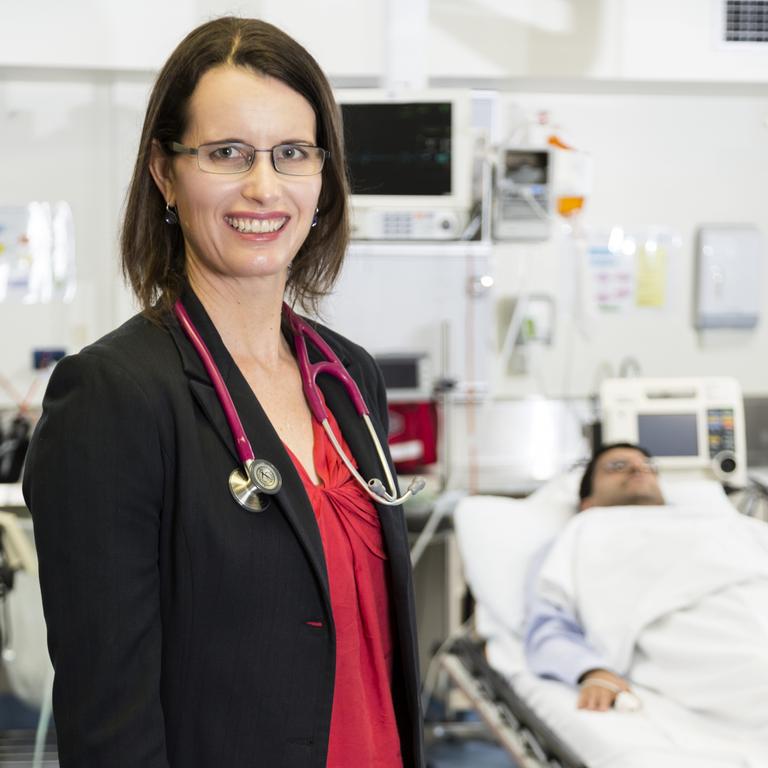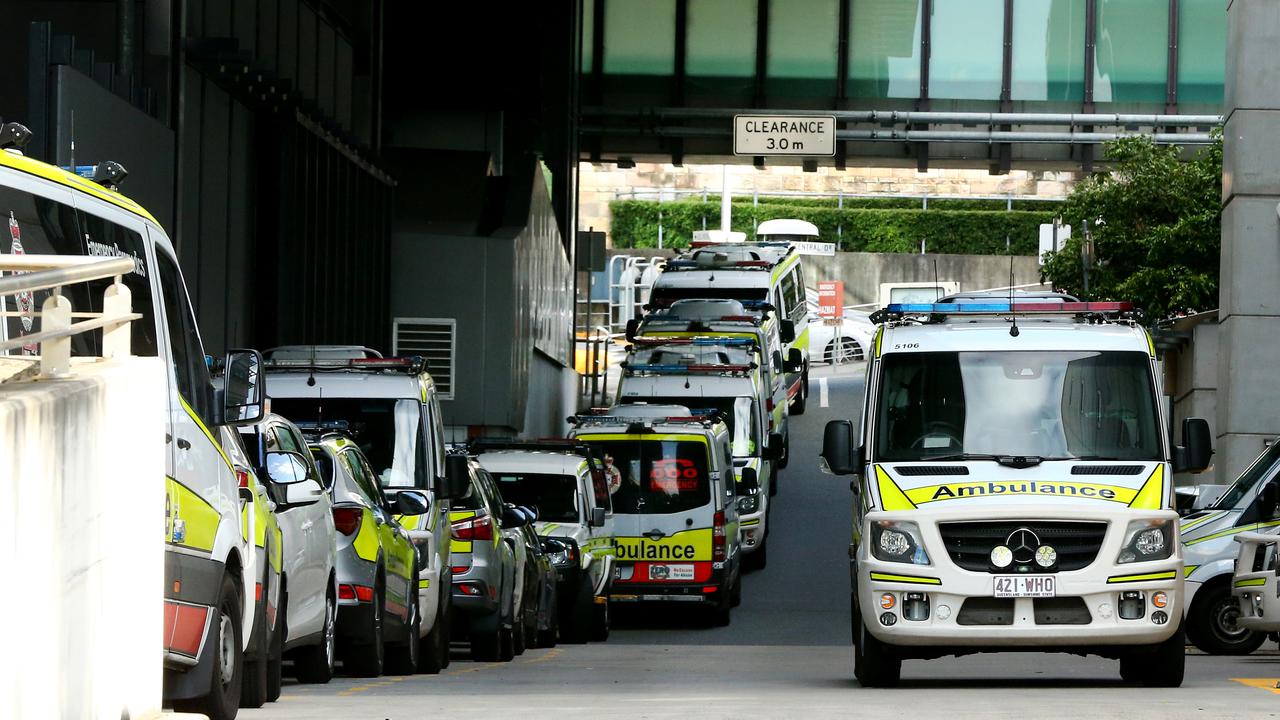Queensland doctors left traumatised, forced to quit amid ramping crisis
The bed block crisis in Queensland emergency departments has become so dangerous that traumatised doctors are quitting under the strain, with a leading physician calling the situation “the worst its ever been”.
QLD News
Don't miss out on the headlines from QLD News. Followed categories will be added to My News.
Patients are dying and potential heart attack cases are left frightened in waiting areas in a situation so dangerous that traumatised doctors are quitting under the strain.
A leading emergency department physician has given an unprecedented glimpse into the disastrous knock-on effect of bed block at the state’s overflowing EDs and how ordinary Queenslanders are the casualties of the mounting health crisis.
“It’s the worst it has ever been and people are dying. There have never been more patients turning up to the EDs and the system just can’t cope,” Australian Medical Association Queensland member and Australian College for Emergency Medicine (ACEM) spokeswoman Dr Kim Hansen, said.
The ED doctor, who works in a metro hospital and has over two decades experience, said that “waiting room” medicine has become the norm at hospitals with not enough beds or staff.

The Courier-Mail has been highlighting the escalating problems of overflowing emergency departments for decades and the impact of ambulance ramping. It was revealed on Thursday that patients are now waiting up to eight hours for medical care, the length of a medic’s average working shift.
“It is a desperate and complex situation and we need the government to listen and take action.
Doctors are seriously worried about the lives and safety of their patients. Young doctors are impacted the most with many cutting back their hours or deciding that emergency work is not for them — and that is going to lead to a whole new problem,” Dr Hansen said.
The seasoned doctor is speaking out following a move by the Australian Medical Association Queensland to take control of the bed block and ramping problems at EDs and hold a series of roundtable meetings to come up with a five-year plan to reduce the queues of vulnerable patients who are either waiting on stretchers in ambulances or are on trolleys in corridors.
The AMAQ reports that there are bed shortages at hospitals throughout the state, both in metro and regional areas.
“Some are worse than others. But when some patients get into the ED they could be in there for 24 hours as there are no inpatient beds to transfer them to. Patients who may be having a heart attack are sometimes left in waiting areas,” Dr Hansen said.
Dr Hansen said that Queensland Health is open to working with the roundtable doctors to try to solve the problems.

The Queensland Ambulance Service told The Courier-Mail that they would continue to work with the hospitals daily “to get ambulances back on the road as quickly as possible”.
Dr Hansen who attended Wednesday night’s AMAQ roundtable said that the medicos and administration staff had a beneficial meeting and a series of meetings will follow to come up with a long-term statewide plan to lessen ramping.
“One of the things we need to look at is the current National Emergency Access Target (NEAT) model which stipulates that a predetermined proportion of patients should be admitted, discharged or transferred from EDs within four hours of presentation. This model needs to be updated,” Dr Hansen said.
“Also, if there were enough nurses to manage the beds that are already available in some hospitals that would help the flow. It’s a complex and difficult problem to fix and we just have to work together to make things better,” she said.
“Funding is the key and it’s very urgent,” Dr Hansen said.
The shock new ramping data revealed in The Courier-Mail yesterday showed there is no time to waste as the statewide target to get patients transferred off ambulance stretchers within 30 minutes was missed by more than 20 per cent during July 2020 and April this year. The longest time a patient waited during November last year was 7.8 hours, a new Question on Notice has shown. Patients were also forced to wait 7.9 hours during December, March and April.




